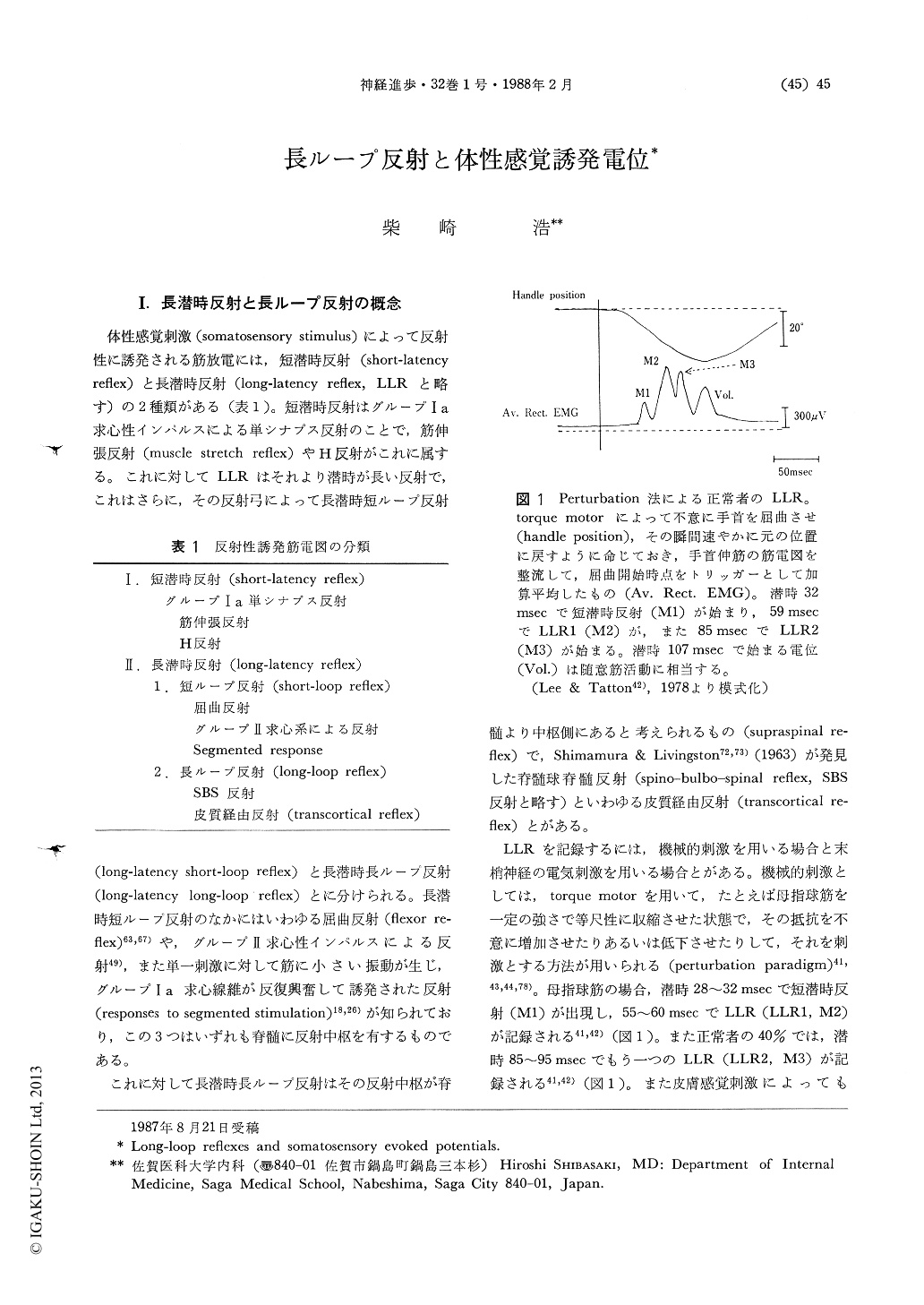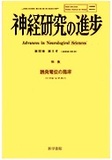Japanese
English
- 有料閲覧
- Abstract 文献概要
- 1ページ目 Look Inside
I.長潜時反射と長ループ反射の概念
体性感覚刺激(somatosensory stimulus)によって反射性に誘発される筋放電には,短潜時反射(short-latency reflex)と長潜時反射(long-latency reflex,LLRと略す)の2種類がある(表1)。短潜時反射はグループIa求心性インパルスによる単シナプス反射のことで,筋伸張反射(muscle stretch reflex)やH反射がこれに属する。これに対してLLRはそれより潜時が長い反射で,これはさらに,その反射弓によって長潜時短ループ反射(long-latency short-loop reflex)と長潜時長ループ反射(long-latency long-loop reflex)とに分けられる。長潜時短ループ反射のなかにはいわゆる屈曲反射(flexor reflex)63,67)や,グループII求心性インパルスによる反射49),また単一刺激に対して筋に小さい振動が生じ,グループIa求心線維が反復興奮して誘発された反射(responses to segmented stimulation)18,26)が知られており,この3つはいずれも脊髄に反射中枢を有するものである。
これに対して長潜時長ループ反射はその反射中枢が脊髄より中枢側にあると考えられるもの(supraspinal reflex)で,Shimamura & Livingston72,73)(1963)が発見した脊髄球脊髄反射(spino-bulbo-spinal reflex,SBS反射と略す)といわゆる皮質経由反射(transcortical reflex)とがある。
Sudden displacement of thumb or hand during voluntary weak muscle contraction (perturbation paradigm) elicits, in addition to the short-latency reflex or monosynaptic spinal reflex in response to the group Ia afferents, two long-latency electromyographic (EMG) reflexes (LLRs) ; LLR1 (M2) at a latency of 40 to 50msec and LLR2 (M3). LLRs can also be recorded by electrical stimulation of the peripheral nerve during voluntary muscle contraction. LLRs are classified into the short-loop reflex and the long-loop reflex. The long-latency short-loop reflexes include flexor reflex, spinal reflex in response to the group II afferents, and recurrent monosynaptic reflexes mediated by the group Ia afferents due to mechanical oscillation of the muscle following a single stretch stimulus (resonance hypothesis). The long-latency long-loop reflexes or supraspinal reflexes include spino-bulbo-spinal (SBS) reflex and transcortical reflex.

Copyright © 1988, Igaku-Shoin Ltd. All rights reserved.


